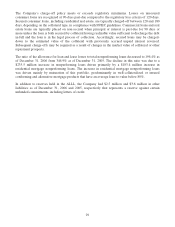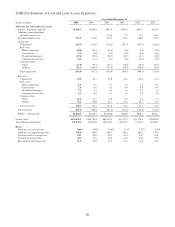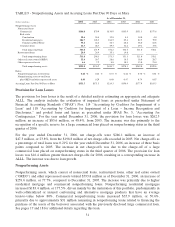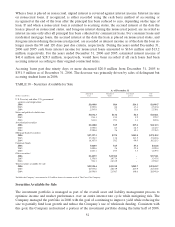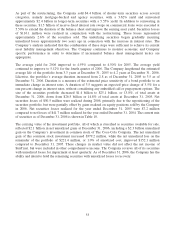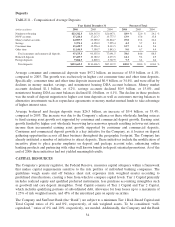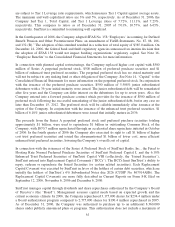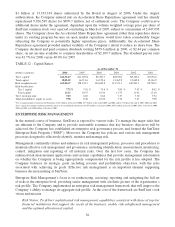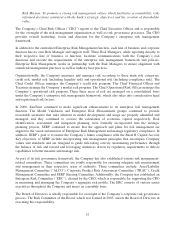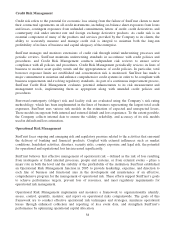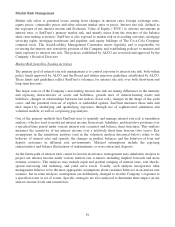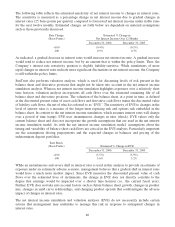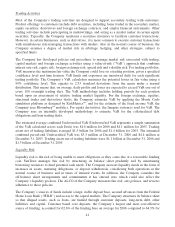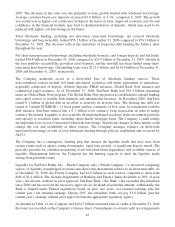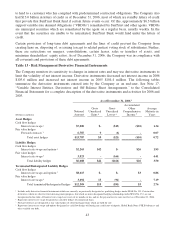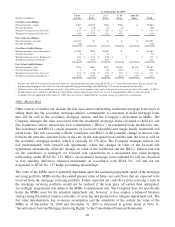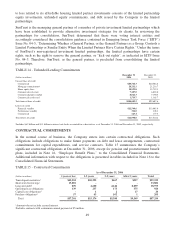SunTrust 2006 Annual Report Download - page 52
Download and view the complete annual report
Please find page 52 of the 2006 SunTrust annual report below. You can navigate through the pages in the report by either clicking on the pages listed below, or by using the keyword search tool below to find specific information within the annual report.
Market Risk Management
Market risk refers to potential losses arising from changes in interest rates, foreign exchange rates,
equity prices, commodity prices and other relevant market rates or prices. Interest rate risk, defined as
the exposure of net interest income and Economic Value of Equity (“EVE”) to adverse movements in
interest rates, is SunTrust’s primary market risk, and mainly arises from the structure of the balance
sheet (non-trading activities). SunTrust is also exposed to market risk in its trading activities, mortgage
servicing rights, mortgage warehouse and pipeline, and equity holdings of The Coca-Cola Company
common stock. The Asset/Liability Management Committee meets regularly and is responsible for
reviewing the interest-rate sensitivity position of the Company and establishing policies to monitor and
limit exposure to interest rate risk. The policies established by ALCO are reviewed and approved by the
Company’s Board of Directors.
Market Risk from Non-Trading Activities
The primary goal of interest rate risk management is to control exposure to interest rate risk, both within
policy limits approved by ALCO and the Board and within narrower guidelines established by ALCO.
These limits and guidelines reflect SunTrust’s tolerance for interest rate risk over both short-term and
long-term horizons.
The major sources of the Company’s non-trading interest rate risk are timing differences in the maturity
and repricing characteristics of assets and liabilities, growth rates of interest-bearing assets and
liabilities, changes in relationships between rate indices (basis risk), changes in the shape of the yield
curve, and the potential exercise of explicit or embedded options. SunTrust measures these risks and
their impact by identifying and quantifying exposures through use of sophisticated simulation and
valuation models, as well as a repricing gap analysis.
One of the primary methods that SunTrust uses to quantify and manage interest rate risk is simulation
analysis, which is used to model net interest income from assets, liabilities, and derivative positions over
a specified time period under various interest rate scenarios and balance sheet structures. This analysis
measures the sensitivity of net interest income over a relatively short time horizon (two years). Key
assumptions in the simulation analysis (and in the valuation analysis discussed below) relate to the
behavior of interest rates and spreads, the changes in product balances and the behavior of loan and
deposit customers in different rate environments. Material assumptions include the repricing
characteristics and balance fluctuations of indeterminate, or non-contractual, deposits.
As the future path of interest rates cannot be known in advance, management uses simulation analysis to
project net interest income under various interest rate scenarios including implied forwards and more
extreme scenarios. The analyses may include rapid and gradual ramping of interest rates, rate shocks,
spread narrowing and widening, and yield curve twists. Usually, each analysis incorporates what
management believes to be the most appropriate assumptions about customer behavior in an interest rate
scenario, but in some analyses, assumptions are deliberately changed to test the Company’s exposure to
a specified event or set of events. Specific strategies are also analyzed to determine their impact on net
interest income levels and sensitivities.
39


